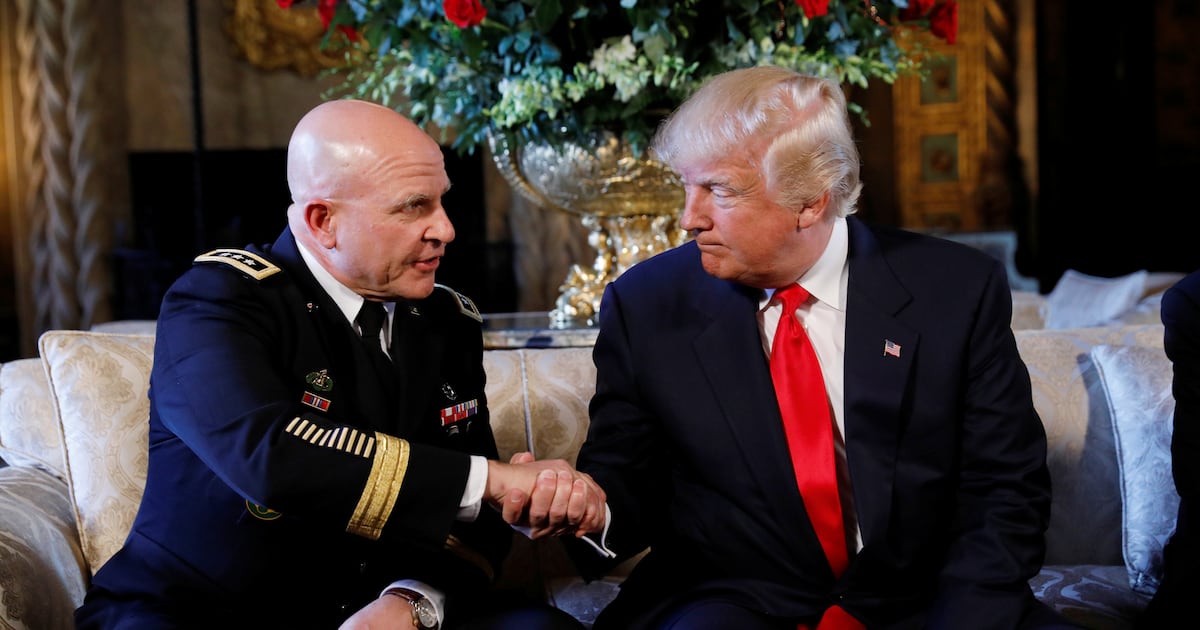It’s said that dead men tell no tales, but Argentine prosecutor Alberto Nisman—found in his apartment with a bullet in his brain on Sunday night—still has a lot to say. For more than a decade he pursued Iran’s involvement in the bombing of the AMIA Jewish center in Buenos Aires that killed 85 people in 1994, and more recently he built a case around the alleged efforts of the current government in Argentina to give the supposed Iranian masterminds of that operation immunity from arrest and prosecution.
The 1994 bombing took place at the height of a world-wide covert war between Israel and Hezbollah, the powerful Lebanese militia and political party organized and funded by Iran in the 1980s. Hezbollah still is intimately tied to Tehran and the Quds Force, the branch of Iran’s Revolutionary Guard Corps in charge of operations outside its borders. The Iranian intelligence services have a long record assassinating enemies in Western countries, although in recent years they seemed to have ratcheted down their activities.
Nisman’s death, which looks like a suicide but took place under extraordinarily suspicious circumstances, has shaken the administration of President Cristina Fernández de Kirchner to its core, sparking protests around the country. There is no evidence of foul play so far, but the street simply doesn’t believe Nisman killed himself, and Kirchner herself, in what looks like a desperate bid to get in front of a story that is eating away at her presidency by the hour, said on Thursday that she, too, doubted Nisman's death was a suicide. She claimed that people who wanted to smear her used Nisman to do that, then "needed him dead."
In fact, the revelations documented by Nisman before he died could have implications far wider than Latin America, raising questions about Iran’s murderous practices two decades ago and, possibly, today.
At a time when the Obama administration is involved in critical negotiations to try to stop Iran from developing a nuclear weapons program, Nisman’s allegations about a secret deal between the Kirchner government and Iranian officials suggest the way Tehran uses money and threats when it conducts sensitive talks behind the scenes.
The narrative is laid out in a 289-page criminal complaint filed the morning of January 14 and published in its entirety on Tuesday by the Argentine courts. It stands as Nisman’s last devastating testament about Iranian-sponsored terrorism in the 1990s and corruption in Argentina today.
But first, let’s recap what’s known about Nisman’s death. On Monday, he was supposed to have presented his evidence against Kirchner and members of her government at a parliamentary hearing. But on Sunday night, the 51-year-old special prosecutor was found in a pool of blood in the bathroom of his 13th floor apartment. A .22 caliber Argentine-made Bersa semi-automatic pistol and a shell casing were found next to the body, and there was an entry wound in his right temple, but no exit wound.
Nisman did not own a gun. He reportedly borrowed this one from someone in his office the day before, although the reasons he gave for wanting a pistol are not clear. There were no traces of powder on his right hand, but investigators say that is conceivable with such a small-bore pistol.
Nisman had a police protection detail that included ten bodyguards, but none of them were present at the apartment late Saturday night or Sunday morning, which is when he appears to have died. His failure to answer the phone or respond to his doorbell during the early afternoon raised concerns. The apartment’s front door was locked from the inside. Eventually the guards, accompanied by Nisman’s mother, got in with the help of a locksmith.
According to subsequent remarks by that locksmith, there was also a service entrance to the apartment through which it might have been readily accessible, and police sources have told the Argentine press that there was a third entrance for air conditioner maintenance that connected to another apartment on the same floor. A fingerprint and partial footprint were lifted from that passage. The other apartment is said to be occupied by a foreign resident of Argentina, but initial reports that that person was Iranian have been shot down.
Kirchner and members of her administration have suggested that Nisman’s charges about a cover-up in the AMIA case and a secret deal with Iran were a delusional distraction from the investigation he was supposed to be conducting, and they have raised questions about his behavior in the days before his death, mainly because he had cut short a vacation with his daughter in Europe. The official Argentine news agency said the complaint Nisman had prepared was “riddled with inconsistencies.”
What the Nisman brief does contain is an extensive record of telephone conversations revealing what appear to be back channel talks between senior officials looking to trade business deals for an international get out of jail free card.
They began, according to the Nisman complaint, in 2011 when Mahmoud Ahmadinejad was still president of Iran. In January of that year, according to Nisman, Argentine Foreign Minister Héctor Timerman met secretly in Aleppo, Syria, with Iran’s then-Foreign Minister Ali Akbar Salehi to convey the message that the Argentine administration was ready to drop efforts to bring to justice the Iranian suspects in the AMIA bombing and a 1992 attack on the Israeli embassy in Buenos Aires as part of a policy decision to reopen full ties with Iran.
Salehi then conveyed word to Ahmadinejad that “Argentina is no longer interested in resolving those two attacks” and “on the other hand it prefers to improve its commercial relations with Iran,” according to the Nisman complaint. As he wrote on page 11, “It’s the first time that a state that has been the object of aggression implores the state that’s the aggressor to sign an accord in exchange for which it will give immunity to the aggressor.”
The talks went on. The Kirchener administration was looking to get Iranian oil at preferential prices in exchange for Argentine beef and grain. But the Iranians wanted a concrete sign that their people would be off the hook on the AMIA case.
Nisman had drawn up quite a hit parade of those officials and operatives he believed were involved in the approval, planning, funding and execution of the attack:
Ali Akbar Hashemi Rafsanjani, who was president of Iran in 1994 and remains one of the theocracy’s most powerful figures.
Ali Akbar Velayati, who was Iran’s foreign minister at the time of the AMIA bombing and ran for the presidency in 2013.
Ali Fallahian, who was the head of the Iranian intelligence ministry in the early 1990s, and was accused by Germany of being behind the murder of Iranian Kurdish leaders at the Mykonos Restaurant in Berlin in 1994. (An interview Christopher Dickey conducted with Fallahian in 2000 gives a sense of the man and his sinister sense of humor.)
Mohsen Rezai, the former head of the Revolutionary Guards and also, subsequently, a presidential candidate. Interestingly, Mohsen’s son Ahmad Rezai became a dissident and established close ties with the United States, even taking U.S. citizenship. Ahmad was found dead in a locked Dubai hotel room in November 2011, an apparent suicide. Investigative journalist Ken Timmerman, founder of the strongly anti-regime Foundation for Democracy in Iran, and a friend of Ahmad’s, personally investigated the incident. He concluded Ahmad likely was killed by “a known Russian mafia hitman [who] had checked into a room just down the hall a few hours before Ahmad’s murder and disappeared the next day, even though he had paid a month’s rent in advance.”
Ahmad Vahidi, former head of the Quds Force and minister of defense.
Mohsen Rabbani, ex-cultural attaché of the Iranian embassy in Argentina.
Ahmad Reza Asghari, former third secretary at the Iranian embassy.
Hadi Soleimpanpour, former Iranian ambassador to Argentina.
Of these, Fallahian, Rezai, Vahidi, Rabani and Asghari, who are believed to have played active roles directing and executing the bombing, were the object of Interpol “red notices” listing them as “wanted by the judicial authorities of Argentina for prosecution” on charges of “aggravated homicide and aggravated damages.”
According to the Nisman complaint, in the Kirchner deal with Iran, Argentina would pressure Interpol to lift these existing arrest warrants against Iranian officials in return for extensive commercial relations that might have included an exchange of weapons for oil. If so, Kirchner would have run up against serious problems with the international sanctions regime imposed on Iran.
In what Nisman described as an elaborate ruse, Buenos Aires and Tehran announced the establishment of a “truth commission” and joint efforts to investigate the AMIA bombing. Nisman claimed the conclusions were preordained and meant to take attention away from the body of evidence he had collected. Jewish community leaders viewed Kirchner’s moves with skepticism, to say the least.
In the end, the alleged deals never went through and the warrants are still outstanding. Former Interpol Chief Roland Noble has defended Kirchner, saying that he was never approached to lift the red notices on the accused Iranians and claiming that if Nisman said otherwise the accusations are "false."
Nisman claimed that Kirchner and Foreign Minister Timerman subsequently tried to cover up the failed talks. If the accusations are proved they will further endanger Kirchner’s tenure and her post-presidential future. Her second and final term ends late this year, but she has been the object of widespread corruption allegations.
Argentines continue to demand a clear and transparent investigation of Nisman’s death. Many regard him as the latest casualty in a weak justice system, and some have taken to calling Nisman the 86th person killed by the AMIA bombing.
Whether his death was a suicide or a homicide, he seems to have had some premonition of impending doom. In the last messages he sent to reporters and friends on Whatsapp he reaffirmed his determination to testify before parliament, even though he knew getting results would be a long shot. Earlier in the month, and again just last Saturday, he told a reporter for the daily Clarín, “I might come out of this dead.”






